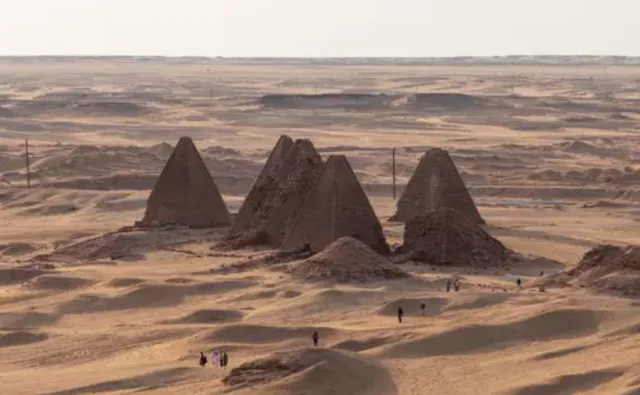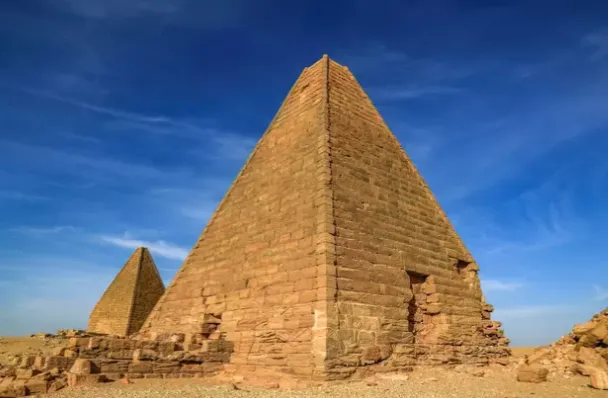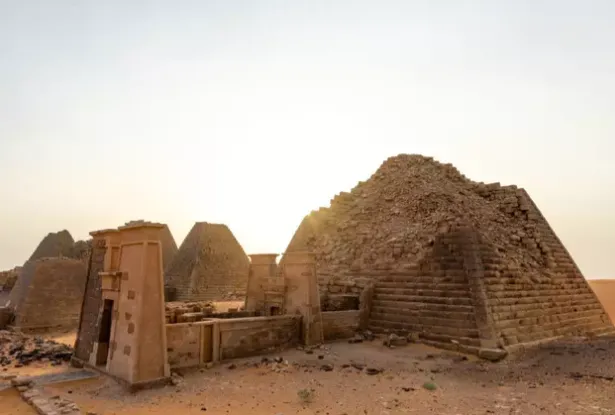A groundbreaking discovery about Egyptian Pyramids challenges long-held beliefs, revealing that these iconic structures were not just reserved for the elite.
A Groundbreaking Discovery Alters Our Understanding of Egyptian Pyramids
Archaeologists have made a discovery that challenges long-held beliefs about Egyptian Pyramids.
This finding, located in the Tombos area of modern-day Sudan—once known as Nubia.
Archaeologists suggest that pyramid burials were not just reserved for the elite, as previously assumed.
Instead, evidence now suggests that lower-class workers also had burial spots within pyramid tombs.
This discovery reshapes our understanding of the civilization that thrived for nearly 3,000 years.

The Hidden History of Egyptian Pyramids in Tombos
A Landmark Discovery in Sudan
Pharaoh Thutmose I conquered the region south of modern-day Egypt around 1500 BC, bringing it under Egyptian rule for the next four centuries.
Archaeologists uncovered burial remains in the ancient village of Tombos. This finding defies long-standing assumptions about pyramid entombment.
Dr. Sarah Schrader from Leiden University in the Netherlands has been leading excavations at Tombos for the past decade.
Her work reveals a diverse range of individuals buried within pyramid structures—some who had lived labor-intensive lives and others who had not.
This suggests that Egyptian Pyramids were not exclusive to the elite, as previously thought.

Who Was Buried in the Egyptian Pyramids of Tombos?
Traditionally, historians believed that only those of the highest status—wealthy nobles and royals—could afford pyramid burials.
However, the new findings indicate a more inclusive burial practice:
- Remains show a mix of individuals, including both low-status laborers and those who had lived less physically demanding lives.
- The study, published in the Journal of Anthropological Archaeology, highlights that pyramid tombs may have also served high-labor workers, not just the ruling class.
Schrader noted, “At first, we didn’t quite understand what the data meant. I think we have assumed for far too long that pyramids were just for the rich.”

What Egyptian Pyramid Burials Reveal About Ancient Society
Challenging the Perception of Elite Tombs
While some researchers argue that physically active remains could belong to nobles who stayed in good shape, Schrader remains skeptical.
She points out that archaeological evidence across Ancient Egypt suggests a clear distinction in activity levels between elite and non-elite individuals.
The Shift Away from Egyptian Pyramid Burials
By the time Ancient Egypt controlled Tombos, the civilization had reached its peak.
However, during this period, royalty had already begun moving away from Egyptian Pyramid burials. Instead, they favored rock-cut tombs, such as those found in the Valley of the Kings.
This discovery not only rewrites history but also deepens our understanding of Egyptian Pyramids, burial practices, and social structures.
The findings at Tombos challenge the long-held notion that pyramids were exclusive to the upper class.
It also opens the door for further exploration into the lives of everyday people in one of the world’s most fascinating civilizations.